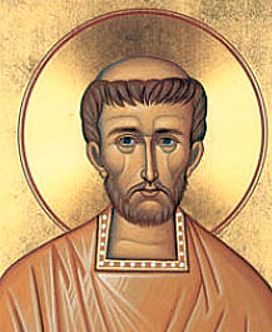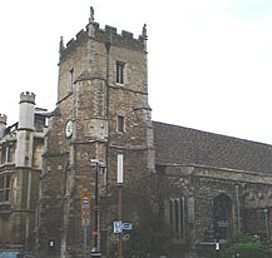Botulph
Botulph is a popular medieval saint who built an Abbey in East Anglia. His main claim to fame is the expulsion of evil spirits and demons from the marshlands of Suffolk. He was canonised a couple of centuries after his lifetime. His name has also been honoured in the dedication of many local East Anglian churches.

Botulph is one of the favourite British saints of the early Middle Ages. He was a nobleman who went to the Continent to become a Benedictine monk. He later returned to England to found a monastery in East Anglia.
Although the life story of this humble affable man is sketchy, several records prove that he did exist in history. His story is more fact than legend. Much of what is known about him was written four hundred years after his death. His biographer was Folcard, the Abbot of Thorney Monastery, a neighbouring district in the Cambridgeshire Fens.
Early life
He was born into a Christian Saxon family in the early seventh century. Botulph, and his brother Adulph, were educated by Saint Fursey in Cnobersburg monastery, located at Burgh Castle near Great Yarmouth. When Mercian forces invaded the region, the boys returned to Europe and became Benedictines. Botulph came back to England in 647 to establish the Benedictine Order. Adulph remained in Europe and became a bishop.
On his return, Botulph approached the little known King of the southern Angles, Ethelmund, whose sisters he had known in Germany. The King offered Botulph part of the royal estate upon which to build a monastery. Instead he settled for a tougher challenge – a desolate, barren site, reputedly haunted by demons.
Career

With the support of Saint Syre, Saint Aubierge, and their brother, King Anna of East Anglia, Botulph founded the monastery of Ikanhoe (Ox-island). According to the Saxon Chronicle, this was established in 654 AD as a Benedictine abbey.
Ikanhoe was a bleak place. It was surrounded by water which exuded foul-smelling marsh gasses that gave out a disturbing night-time glow. Some early accounts maintain this was the work of ghosts and devils. Another theory claims that a few degenerate descendants of an earlier race may have occupied these Suffolk marshes.
Endless work was needed to make this austere place viable. As their Abbot, Botulph attracted enough brother monks and hermits to meet the task. Soon, through their hard work and faith, the monastery grew. The monks built several structures and drained the swamps. They turned large areas of marsh and scrub into productive grazing and farm land. Thus dispelling the local people’s fear of demons.
No one knows for sure where Ikanhoe was. The two modern contenders are Iken in Suffolk and Boston in Lincolnshire. For many years local historians believed that the developing area around the monastery came to be called Botulph’s Town. It later became known as Botulphston, with the name finally contracted to Boston.
However, more recent research suggests that the actual spot may be the village of Iken, near Snape in east Suffolk. Centuries ago, the River Alde almost encircled Iken. The church there is also dedicated to St. Botulph. During his time at the monastery, Botulph worked as a travelling missionary through rough, bandit-plagued areas of East Anglia, Kent and Sussex.
Botolph’s legacy
Botolph lived an eventful life of Christian endeavour and teaching. After suffering a long illness, he died in 680 as attendants carried him to chapel for a compline service. Although Botolph has no place in the Prayer Book Calendar, Christians commemorate his death on June 17.
His burial took place at Ikanhoe. A couple of centuries later, the monks removed his relics to protect them from the invading Danes. Historians believe they were transferred to Grundisburgh, a village near Woodbridge. Later, the Benedictines split the remains and distributed them to monasteries at Ely, Thorney and Bury St Edmunds, for their safe keeping.
According to legend, they took the relics destined for Bury by night. A light shining above the site of the new shrine guided the travellers to their destination. In the 11th century, a portion of Botulph’s relics were taken to the Abbey of Westminster after it was rebuilt by Edward the Confessor.
There is some uncertainty as to where Botulph’s relics lie. What is not in doubt is that many churches continue to bear his name in his honour. There are well over fifty, chiefly in East Anglia. They bear witness to his untiring work which strengthened the Benedictine movement for many centuries after his lifetime.
Patron saint for travellers and farmers
Some of the churches dedicated to Botolph stand at ancient city gates. They served as safe-havens for travellers in times when robbers and foot-pads lurked along the roadways. Hence, Botolph is regarded as the patron saint for travellers and itinerants. He also has the patronage for farmers and agricultural workers.
His name is perpetuated not only at Boston in Lincolnshire but also by the New World city of Boston in Massachusetts. He gave his name to several English villages including Bottlebridge near Peterborough. Originally called Botulph’s Bridge, the village lost its identity when it became part of Orton Longueville parish in 1762.
